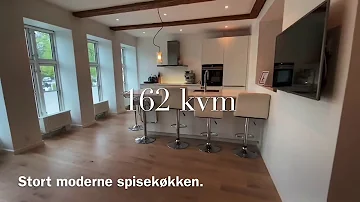What is cryotherapy good for?
Indholdsfortegnelse:
- What is cryotherapy good for?
- What are the negatives of cryotherapy?
- Is cryotherapy worth the money?
- Can cryotherapy go wrong?
- Does cryotherapy burn fat?
- Who should avoid cryotherapy?
- How many calories does 3 minutes of cryotherapy burn?
- Is cryotherapy good for belly fat?
- What are the negative effects of cryo?
- Does 1 session of cryotherapy work?
- Does cryotherapy work on belly fat?
- Does cryotherapy really burn 500 calories?
- Does fat come back after cryotherapy?
- What should I avoid after cryotherapy?
- How many calories do you burn in 3 minutes of cryotherapy?
What is cryotherapy good for?
Cryotherapy is a form of treatment that uses cold temperatures to therapeutic effect. It can be used locally, in a highly targeted way, or more generally, to trigger your whole body to respond in a certain way.
Localised cryotherapy can include the use of ice packs or ice massage, coolant sprays or ice baths, or even special probes that lower the temperature of your tissue.
Whole-body cryotherapy, on the other hand, immerses your entire person in extremely low temperatures for a few minutes. This can offer health benefits for your whole body.
Cryotherapy is a general term that refers to treatment using cold temperatures. It’s also known as cold therapy. The way it works and the experience of treatment will vary depending on what you are being treated for.
We’ve given an overview of the three main types of cryotherapy and what to expect from treatment.
What are the negatives of cryotherapy?
Cryotherapy means âcold therapyâ which is a process where the body is exposed to intense cold temperatures for several minutes. This therapy can be provided to just one region or for the whole body. Localized cryotherapy can be delivered in various ways including ice packs, ice massages, coolant sprays, baths, and even via probes administered into tissue.
The whole-body cryotherapy (WBC) is a technique where the entire body is immersed in extremely cold air for several minutes that confers several health incentives. The person is made to stand in an enclosed chamber or a small closed space that covers their body but has an opening for the head at the top. The temperature in the cold enclosure will drop down to between negative 200-300F and they will stay in the ultra-low temperature air for around 2 to 4 minutes.
Is cryotherapy worth the money?
Is your arthritis acting up? Do you want to lose weight, relieve insomnia, or boost your athletic performance? In your online search for answers to these and other common ailments, you might have come across a chilly solution known as cryotherapy.
Cryotherapy uses extreme cold as medicine. The term refers to any type of cold therapy, so even icing your knee with a bag of frozen peas counts.
Can cryotherapy go wrong?
Cryotherapy, also known as cold therapy or ice treatment, is an application utilized to bring the body temperature down at the tissue and cellular level in order to achieve therapeutic benefits, but there are a few cryotherapy side effects that therapists should be aware of.
But, First⦠How to Provide Cryotherapy
Does cryotherapy burn fat?
Cryotherapy is the general use of low temperatures in medical therapy. It’s not new, in fact
Whole body Cryotherapy was developed in Japan by Professor Toshiro Yamaguchi in 1978 for the treatment of rheumatoid arthritis. Since then there has been much research into the other health benefits which can include weight loss.
With whole body Cryotherapy, the body is exposed to extremely low temperatures for up to 3 minutes. During this time, the average skin temperature drops to about 10°c whilst the core body temperature remains unchanged. Once you are in the Cryosauna (your head and neck area are not covered by the chamber and so are exposed to room air above the device), a fine nitrogen mist is then sprayed onto your body in order to lower the temperature. You are never left alone. A trained Medical Grade Therapist stays with you throughout your treatment and you can leave the chamber at any time you wish during the treatment.
Who should avoid cryotherapy?
Cryotherapy (or âfrost therapyâ) has been used for centuries and is growing in popularity. Over the last several years, numerous cryotherapy âspasâ have opened in the United States and, as of 2017, there were some 400 such spas operating cryochambers (or cryosaunas) in 38 states.
Cryotherapy spas have come under scrutiny after a 2015 incident in which an employee, working at a cryotherapy spa in Las Vegas, was found dead after using a cryochamber unsupervised.
How many calories does 3 minutes of cryotherapy burn?
The term “cryotherapy” refers to using cold temperatures for therapeutic benefits; putting an ice pack on a twisted ankle is technically considered cryotherapy. There are two main types of cryotherapy, including localized and whole body. Both offer extreme cold induced thermogenesis, which helps promote freezing fat cells, skin appearance and body mass index.
The former involves using super-chilled temperatures to heal a specific part of the body (like applying ice packs to a twisted ankle), and the latter, as the name suggests, involves exposing the entire body (with the exception of the head) to ultra-low temperatures. While cryotherapy has been used for centuries, whole-body cryotherapy was first introduced in the 1970s. Dr. Yamaguchi, a Japanese doctor, used whole-body cryotherapy as a treatment for rheumatoid arthritis. He used freezing cold therapy over a short period of time to ease the pain and inflammation of his patients.
Is cryotherapy good for belly fat?
Naturally, I get this question a lot working at the CryoBar. In the literal sense, no, you won’t come out of the whole body cryo chamber any thinner than when you got in. Whole-body cryo does, however, boost your metabolism like crazy. One session in the chamber can get your body to burn between 500-800 calories. That’s around 25-40 percent of a person’s average caloric intake!
If you’re doing cryotherapy consistently enough and in conjunction with your overall weight loss regime, then there’s no doubt that cryo could be a significant game-changer in your weight loss journey.
Aside from burning a good amount of calories, whole-body cryo also gave me the energy to hit the gym on days when I could, but would have otherwise been too tired to. Let me tell ya’, running on a treadmill or lifting weights is not successful (and quite frankly, just not very safe) after an exhausting day. Cryotherapy at least gave me enough of an endorphin rush to make it happen and to make it enjoyable. I was hitting the gym a lot more once I started chilling consistently. The muscle-repairing benefits of each chill sesh made it easier to get back in the game quicker, too.
What are the negative effects of cryo?
Cryotherapy means âcold therapyâ which is a process where the body is exposed to intense cold temperatures for several minutes. This therapy can be provided to just one region or for the whole body. Localized cryotherapy can be delivered in various ways including ice packs, ice massages, coolant sprays, baths, and even via probes administered into tissue.
The whole-body cryotherapy (WBC) is a technique where the entire body is immersed in extremely cold air for several minutes that confers several health incentives. The person is made to stand in an enclosed chamber or a small closed space that covers their body but has an opening for the head at the top. The temperature in the cold enclosure will drop down to between negative 200-300F and they will stay in the ultra-low temperature air for around 2 to 4 minutes.
Does 1 session of cryotherapy work?
Cryotherapy works by freezing fat cells. This cold therapy eliminates them, as well as the surrounding tissue and nerve fibers. In addition, it reduces inflammation and muscle pain. Studies have shown that cryotherapy may help athletes recover faster after physical training. But there is still little evidence to support the claim that this treatment will help you lose weight.
Cryotherapy is a relatively new addition to the health industry. It works by freezing the body fat layer underneath the skin. This causes a local inflammatory response that activates macrophages, which help eliminate dead fat body cells. A single session can treat multiple body areas. Results can be visible after a couple of weeks.
One session of whole body cryotherapy can take up to one hour, depending on the area. It may also include some massage, which helps break down fat cells. Researchers have shown that fat cells are more sensitive to low temperatures than other types of tissues. When fat cells are damaged, an inflammatory response begins. This causes the fat cells to die, and the body releases macrophages, which are white blood cells that attack the injured area. This process kills the dead fat cells and eliminates them from the body.
The process of cryotherapy increases fat burning through thermogenesis, which is the body’s process of generating heat. The process occurs in all warm-blooded animals and is responsible for burning calories and fat. This process is known as non-shivering thermogenesis. The goal of cryotherapy is to increase metabolic effects, specifically heat production and burn off fat and calories without the shivering that often accompanies other cold-therapy procedures.
The procedure is safe, although some individuals may experience temporary side effects. The most common side effects are numbness, tingling, and redness. In rare cases, a person may experience darkening of the skin after the treatment. However, this reaction usually clears up within 24 hours. For safety purposes, cryotherapy should be performed under the supervision of a medical professional.
Studies have shown that cryotherapy can help you lose weight by reducing abdominal fat. The treatment has been shown to reduce adipose tissue and abdominal obesity in menopausal women. Participants experienced reductions in their waist circumference and waist-to-height ratio after cryotherapy. The treatment may also help those with cardiometabolic syndrome.
While some research indicates that cryotherapy may improve the intensity of workouts, no clinical studies have been conducted. One study in Women’s Health suggested that whole-body cryotherapy could activate brown fat, a type of fat in the body that burns calories. The article also noted that cryotherapy may temporarily alter your metabolism. However, no clinical studies have been done to confirm this effect.
Does cryotherapy work on belly fat?
Cryotherapy, which literally translates to “cold therapy,” is a treatment in which you are exposed to very cold temperatures for a short period of time. The exposure of your body to cold (sometimes subzero) temperatures is thought to have a wide range of benefits, especially when it comes to pain and inflammation.
The application of extremely cold temperatures reduces blood flow to the targeted area. This can then minimize swelling and subsequent inflammation in the area due to the lack of white blood cells that are getting to the targeted site and are responsible for your body’s natural inflammatory response. In addition, cryotherapy can also work to temporarily minimize pain in the affected area.
In addition to the common cryotherapy applications for targeting pain and inflammation, cryotherapy chambers are becoming increasingly popular for weight loss and, more specifically, getting rid of fat tissue.
Cryotherapy chambers are designed to immerse your entire body in especially frigid temperatures, as cold as -238 Fahrenheit (-150 degrees Celsius) for a very short period of time (generally no more than five minutes). Cryotherapy advocates claim that this version of whole-body cryotherapy can help you burn more calories and, thus, lose weight. While the research on whether cryotherapy can actually help with weight loss is still fairly inconclusive, there is some evidence that it can have a marginal effect on your metabolism.
Does cryotherapy really burn 500 calories?
Cryotherapy is the general use of low temperatures in medical therapy. It’s not new, in fact
Whole body Cryotherapy was developed in Japan by Professor Toshiro Yamaguchi in 1978 for the treatment of rheumatoid arthritis. Since then there has been much research into the other health benefits which can include weight loss.
With whole body Cryotherapy, the body is exposed to extremely low temperatures for up to 3 minutes. During this time, the average skin temperature drops to about 10°c whilst the core body temperature remains unchanged. Once you are in the Cryosauna (your head and neck area are not covered by the chamber and so are exposed to room air above the device), a fine nitrogen mist is then sprayed onto your body in order to lower the temperature. You are never left alone. A trained Medical Grade Therapist stays with you throughout your treatment and you can leave the chamber at any time you wish during the treatment.
Does fat come back after cryotherapy?
Yes. Do not enter a hot sauna or Jacuzzi for at least six hours. You should also minimize alcohol consumption for several hours following treatment.
Two treatments daily is the max, spaced at least five hours apart.
What should I avoid after cryotherapy?
Yes. Do not enter a hot sauna or Jacuzzi for at least six hours. You should also minimize alcohol consumption for several hours following treatment.
Two treatments daily is the max, spaced at least five hours apart.
How many calories do you burn in 3 minutes of cryotherapy?
Cryotherapy works by freezing fat cells. This cold therapy eliminates them, as well as the surrounding tissue and nerve fibers. In addition, it reduces inflammation and muscle pain. Studies have shown that cryotherapy may help athletes recover faster after physical training. But there is still little evidence to support the claim that this treatment will help you lose weight.
Cryotherapy is a relatively new addition to the health industry. It works by freezing the body fat layer underneath the skin. This causes a local inflammatory response that activates macrophages, which help eliminate dead fat body cells. A single session can treat multiple body areas. Results can be visible after a couple of weeks.
One session of whole body cryotherapy can take up to one hour, depending on the area. It may also include some massage, which helps break down fat cells. Researchers have shown that fat cells are more sensitive to low temperatures than other types of tissues. When fat cells are damaged, an inflammatory response begins. This causes the fat cells to die, and the body releases macrophages, which are white blood cells that attack the injured area. This process kills the dead fat cells and eliminates them from the body.
The process of cryotherapy increases fat burning through thermogenesis, which is the body’s process of generating heat. The process occurs in all warm-blooded animals and is responsible for burning calories and fat. This process is known as non-shivering thermogenesis. The goal of cryotherapy is to increase metabolic effects, specifically heat production and burn off fat and calories without the shivering that often accompanies other cold-therapy procedures.
The procedure is safe, although some individuals may experience temporary side effects. The most common side effects are numbness, tingling, and redness. In rare cases, a person may experience darkening of the skin after the treatment. However, this reaction usually clears up within 24 hours. For safety purposes, cryotherapy should be performed under the supervision of a medical professional.
Studies have shown that cryotherapy can help you lose weight by reducing abdominal fat. The treatment has been shown to reduce adipose tissue and abdominal obesity in menopausal women. Participants experienced reductions in their waist circumference and waist-to-height ratio after cryotherapy. The treatment may also help those with cardiometabolic syndrome.
While some research indicates that cryotherapy may improve the intensity of workouts, no clinical studies have been conducted. One study in Women’s Health suggested that whole-body cryotherapy could activate brown fat, a type of fat in the body that burns calories. The article also noted that cryotherapy may temporarily alter your metabolism. However, no clinical studies have been done to confirm this effect.







